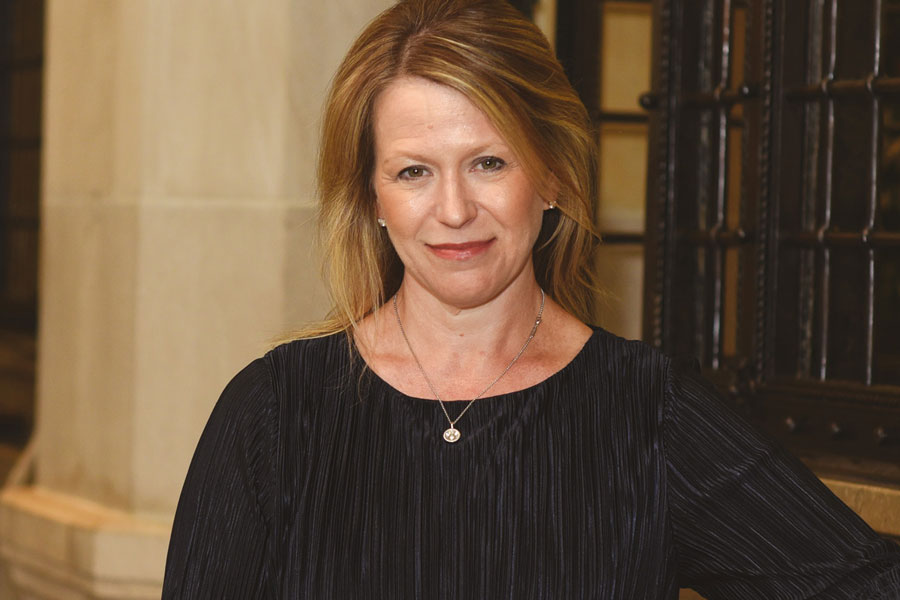Michelle Neal, head of the markets group, kicked off the 2023 US Treasury Market Conference last week, which saw the New York Fed host representatives from the US Department of the Treasury, the Board of Governors of the Federal Reserve System, the US Commodity Futures Trading Commission, and the US Securities and Exchange Commission, at its ninth annual conference.

The aim of the day was to highlight key developments, policy issues and recent trends in the Treasury market, “the deepest and most liquid securities market in the world”.
Speaking in a personal capacity, Neal posited that transparency, particularly around transaction data, was key to building trust, improving investor confidence by allowing them to analyse executed transactions instead of observing indicative quotes.
The reporting of executed prices improves price discovery, which can reduce trading costs, improve liquidity, and potentially attract new entrants to the market.
Earlier this year, FINRA began releasing daily aggregate data on Treasury market transactions, and last year, the Treasury announced plans to release TRACE transaction data for on-the-run nominal coupons. “However, even with this progress, gaps in transparency remain,” Neal said.
A more transparent market
In March, the Treasury Markets Practices Group (TMPG) released a white paper on data availability and transparency in the US Treasury market that identified several gaps, particularly in the dealer-to-client cash market and the repo market.
“Looking at the gap in the cash market specifically, there appears to be opportunity for improvement in providing transparency around transaction-level data,” she noted.
Taking the reins, John Williams, president and CEO of the New York Fed, referencing ‘Star Trek: The Next Generation’ and ‘Sherlock Holmes’, underlined the importance of data – transactions-based, transparent and well-documented – and how it is integral to decision-making at the Fed.
“In Sherlock’s world, data means fingerprints, footprints, handwriting, and ciphers. In our world, data means economic indicators like gross domestic product, the Consumer Price Index, and the unemployment rate. These numbers make up the dashboard of what’s happening in the economy,” Williams said.
These trustworthy numbers, Williams said, are essential not just for policymakers such as himself, but also for businesses, households, journalists, among others. “To be clear, having access to an abundance of data is a wonderful problem to have,” Williams said.
“The very same terminal that gives you access to numbers that are supported by millions of transactions could also give you access to numbers that have not seen a transaction in quite some time, if ever.” Spotting the difference between the two can be difficult, he said, and therefore, it is imperative one fully understands the origins of the data one has at hand.
Williams suggested that a prime example of such a “capital mistake” was LIBOR. “The lesson of LIBOR is that there are times when what we think of as strong financial market data is only a mirage.” LIBOR was one of the most widely used benchmarks in the world, Williams said, underpinning hundreds of trillions of dollars of financial instruments and contracts.
Despite this central role, LIBOR was inherently fragile and subject to manipulation. “It is astonishing to think about the entire global financial system relying on the small set of transactions underlying LIBOR,” he said. “In fact, during periods of financial market stress, LIBOR was based on no transactions, which is what opened the door to the fraud and bad behaviour we now associate with it … It led to the realisation that things we think of as data may be merely smoke and mirrors.”
This realisation is what led the Federal Reserve, the Financial Stability Board, and others to invest heavily in the transition from LIBOR and on to robust reference rates, such as the Secured Overnight Financing Rate (SOFR) which he characterised as “accurate, carefully constructed, and transparent.”
In the post-LIBOR era, Williams underlined the importance of transparency and clarity in data, especially financial market data. “This is particularly true in the age of AI, when the sources of data are harder to trace.” He suggested that, in addition to SOFR, the Principles for Financial Benchmarks set forth by the International Organisation of Securities Commissions (IOSCO), which established a very stringent and specific model for reference rates, was a good post-LIBOR benchmark.
Other examples include the FED’s regular market surveys and Trade Reporting and Compliance Engine (TRACE) data. This initiative, which was started in 2017 to fill in the gaps on Treasury transaction data, is a significant component of a broader interagency effort to enhance understanding and transparency of the Treasury securities market. “This has proven valuable as it has allowed the official sector to closely track developments in the cash Treasury market,” Williams said.
Williams concluded by saying there is an opportunity for central banks, governments and the private sector to come together to improve data transparency and accuracy. It takes a global village — regulatory groups, industry groups, and global standard setters like IOSCO all have a role to play.
“We must use forums and collaborations like these to think through the opportunities to further develop data transparency and make improvements. One benefit of this conference is the partnerships it has fostered. Participants have accomplished so much by working together. And given our collective reliance on data, this must continue to be a priority moving forward,” Williams concluded.
International investment in Treasuries
Anna Nordstrom, head of the FED’s domestic and international markets functions division, made the case for the importance of the foreign investor in the US Treasury market.
According to Treasury International Capital (TIC) data, foreign investors hold about $8 trillion of Treasury securities, which is about 30% of the market. “This high degree of foreign interest reflects the liquidity, reliability, and insurance value of Treasuries in a diversified portfolio,” Nordstrom suggested.
Foreign Treasury holdings are split nearly equally between the official sector — mostly central banks and sovereign wealth funds — and the private sector, which includes institutions such as banks, insurers, hedge funds and pension funds.
Nordstrom then outlined why such a diverse array of foreign investors are drawn to US Treasury securities. For one, the liquidity of the Treasury market is critical for reserve managers and is highly valued by all investors that seek to maintain a diverse securities portfolio. Many reserve managers have liquidity as the primary objective for their foreign reserves to ensure ready access to funds. In addition to trading liquidity, Treasuries offer safety since they are backed by the full faith and credit of the United States government. For reserve managers, maintaining a high degree of safety is essential for ensuring foreign reserves are reliably available to meet liquidity needs.
“Lastly, US Treasuries provide a diversification benefit and insurance value to investors that pays out in an uncertain world. The future is ultimately unknowable, and time and again we are reminded that allocating to safe and liquid assets can protect portfolios from the unexpected,” Nordstrom said.
Underscoring the liquidity and safety provided by Treasuries to investor portfolios, Nordstrom highlighted how during recent periods of market volatility, foreign investors as a group actually increased their allocations to US Treasuries. And while the share of US Treasuries held by the foreign official sector has declined slightly in recent years, this change appears to largely reflect idiosyncratic factors — with some reserve managers decreasing and others increasing their holdings as global FX reserve levels have plateaued.
Getting strong signals
Lastly, Roberto Perli, manager of the System Open Market Account, spoke about how to ‘disentangle’ messages from the Treasury market, and on how a well-functioning Treasury market can be helpful for understanding the economy and informing monetary policy decisions.
The Treasury market is particularly important from a monetary policy perspective for many reasons, Perlie said. He noted three reasons, in particular: Changes in the prices of Treasury securities provide important signals about the economic outlook; short-maturity Treasury securities and Treasury repurchase agreements (repo) are an integral part of money markets and thus affect the implementation of monetary policy; and Treasury securities at all maturities are instrumental to the transmission of monetary policy, as many other market prices and loans are influenced by the prices of those securities.
“The Treasury market appears to be functioning smoothly,” Perli said.
Although a number of commonly used metrics indicate that liquidity is worse than it was in years past, those same measures are also broadly consistent with what one might expect given the current high levels of volatility. But because Treasury yields can change for different reasons, Perli noted, one must look at two unobservable components: the expected path of the policy rate over the life of the security, and the so-called term premium, which reflects potentially many factors that are separate from policy expectations. It is these unobservable components that are most useful to disentangle in order to understand the signals that the Treasury market is sending about the state of the US economy.
“Going beyond observable Treasury yields is crucial to disentangling the message that the Treasury market is sending about the outlook for the US economy,” he said.
“The unobserved components of those headline yields give us critical insight into the nature of changes in market expectations. These insights not only inform policymakers, but also are an important aspect of how monetary policy is transmitted to the real economy. As I noted at the outset, these channels and signals are only useful to the extent they are derived from prices that accurately reflect the views of market participants. That emphasizes the critical role a well-functioning Treasury market plays, not just as a benchmark for other instruments and a store of liquidity, but as a tool for monitoring the health and evolution of the broader economy, as seen from the perspective of market participants,” Perli concluded.
©Markets Media Europe 2023
©Markets Media Europe 2025


























